Is your turfgrass turning yellow? Are you trying to figure out what might be the reason behind it? If your answers are ‘Yes’ to both questions, you’re at the right place!
There might be plenty of reasons why your lawn grass is turning yellow. Here, we’ll discuss a few of them. Let’s get started!
1. Dryness
When your lawn is completely exposed to sunlight and higher temperature for a few days and not watered enough, it causes the grass to lose water and dehydrate.
When the grass doesn’t have enough moisture, it can cause stress and promote damage and discoloration of grass on your lawn. You can simply prevent your lawn from dryness by regularly watering it. You can also consider reseeding the areas that have been damaged during the fall.
2. Too much water
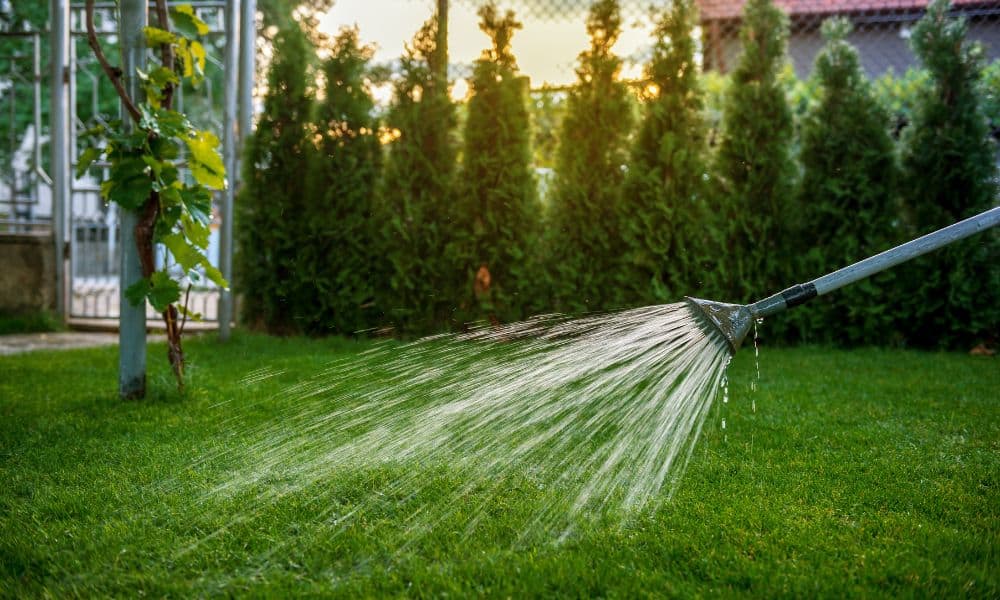
Watering is necessary for good grass growth, but you must be careful not to water beyond necessity. Too much water in your lawn may also be one of the reasons your grass is turning yellow.
Overwatering blocks the proper development of the grassroots as it limits the supply of oxygen due to waterlogging.
Improper development of roots leads to poor intake of nutrients, oxygen, and even water from the soil, forcing the grass to turn yellow. It may also be the cause of various fungal diseases and insect infestation.
If you overwater your lawn, you’ll be depriving them of the necessary nutrients. Thus, you might further observe the signs like leaf thinning and discoloration.
Frost burns during winter, and excessive rain also causes the grass to turn yellow; however, grass may not die. You need to provide the proper treatment to the grass to prevent it from further yellowing.
3. Overuse of fertilizers
Too much of anything is not good for growing grass. Too much use of fertilizers might also be the reason why your turfgrass is turning yellow.
If you’re overusing synthetic fertilizers in your lawn, it may be burning your lawn; thus, the yellowish discoloration in the lawn grass. These synthetic fertilizers contain nitrogen salt that burns your turfgrass leaves; this condition is also called leaf scorch.
Overuse of fertilizers may also lead to the slow growth of the grass on your lawn and can also cause the fertilizer to crust on your soil surface.
4. Lawn Diseases
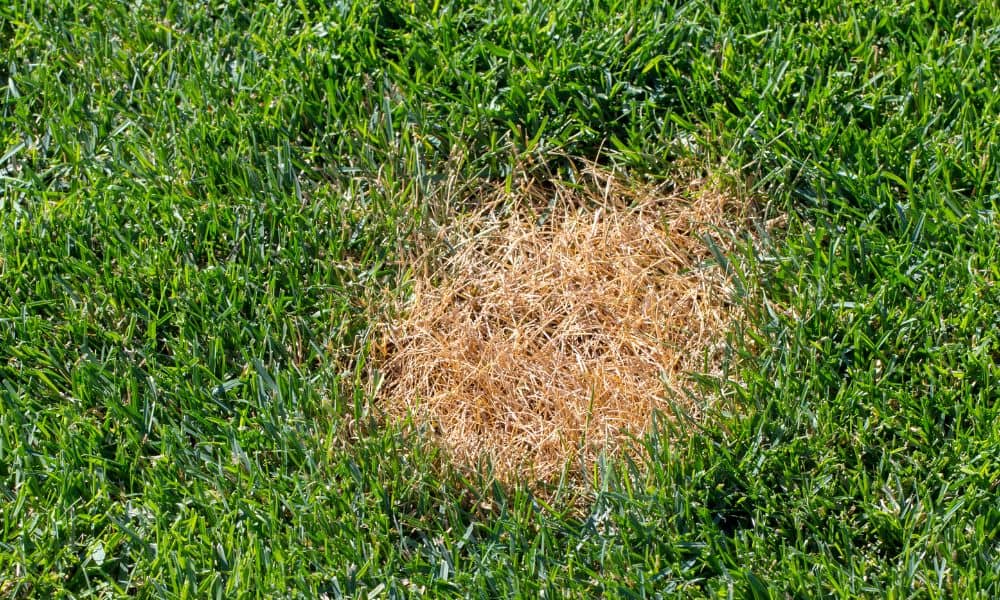
As mentioned above, overwatering and overusing fertilizers can turn your grass yellow. But sometimes, some common lawn diseases may be the reason why your turfgrass is turning yellow.
Some of the lawn diseases like Dollar spot are often known to turn the turfgrass yellow. These diseases also hamper the growth of the grass on your lawn.
Whenever you notice a tiny yellow spot begins and continues outwards, expanding into irregular or circular patches, it might be an indication of some kind of disease in your turfgrass.
5. Lawn Rust
This fungal disease infects your lawn during dry seasons and when your lawn grass is low on nitrogen, i.e., when the growth of grass is slowed down.
Lawn rusts are often notorious for weakening the turfgrass, making it more susceptible to other types of lawn diseases. So, make sure you identify and treat them early.
Pullout a few leaf blades and look for any reddish-orange or yellowish-brown spores or coloration. If you notice such spots, you might have to opt for a broad-spectrum fungicide for your lawn.
6. Deficiency of nutrients
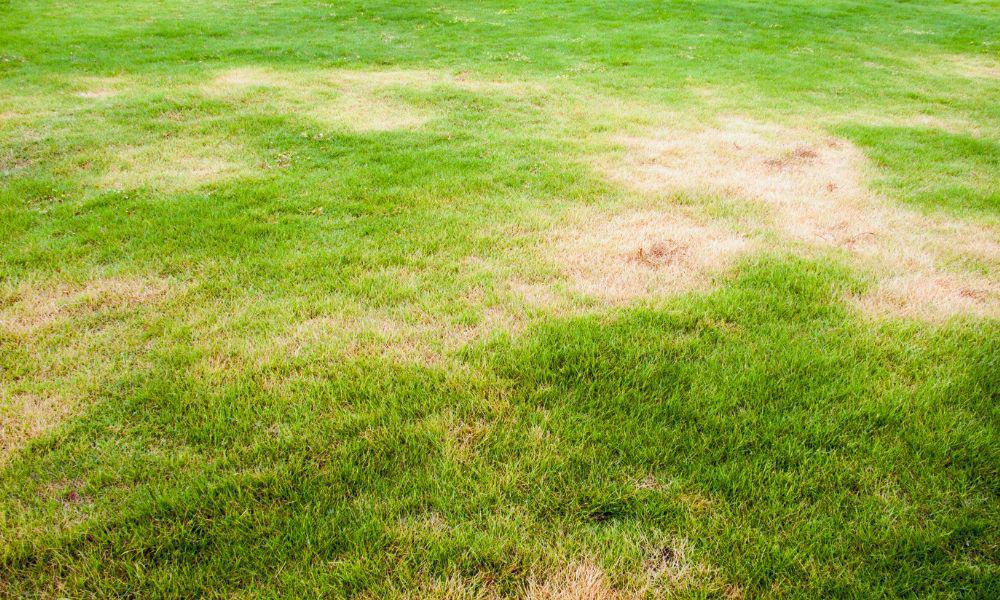
It might be one of the major reasons your lawn grass is turning yellow. You might be aware that you need to add various nutrients that are missing in your lawn for the proper growth of the grass.
However, sometimes, even if you apply those missing nutrients on the lawn, some parts of the lawn may be left out unintentionally.
You might notice the grass of the missing areas turning yellowish or fluorescent discoloration on the leaf blades as they lack the necessary nutrients for their proper growth.
Nitrogen and iron are the two significant nutrients deficiency that causes the grass to turn yellow. You can simply do a soil test, find out the deficiencies, and add the necessary nutrients to your soil to help the proper development of your turfgrass. And, remember to spread evenly!
7. Due to Pests
Pests are also one of the reasons that lead to the discoloration of your grass. The discoloration occurs because the insects feed upon the roots of the grass, thus, causing damage.
Once the root is damaged, the grass can’t get the necessary nutrients, water, and air from the soil leading to the color change in your grass. You must routinely check your lawn grass for the damage caused by the pests.
Usually, younger pests cause more damage than adults. Once you find the areas the pests have been causing damage, you must immediately use insecticide to control the damage.
8. Compactness of soil
You may also have noticed that the grass on the areas where you have walked in your lawn is gradually turning yellow. You may wonder, ‘why so’? The reason is as you continuously walk on those areas, the soil becomes compact, and the pores become too small.
When the soil becomes compact, it prevents the roots from spreading and also keeps the root far from the water and other vital nutrients. Once this occurs, it affects the proper growth of the grass, and thus, they begin to turn yellow.
You can get rid of this problem by creating a separate walkway on your lawn. Furthermore, you can also aerate your lawn where the soil has been compacted.
9. Dog Urine
Do you have a pet dog? If you notice only a few spots on your lawn have turned yellow, your dog might be the cute culprit here.
Dog urine turning grass yellow will not seem so mysterious once you understand the basic chemistry behind it. We’ve discussed before, if you’re overfertilizing, too high nitrogen content in the lawn might be the reason why your turfgrass is turning yellow.
This case is somewhat similar. Urine has high nitrogen content. And wherever your dog pees on the lawn, the grass on the area is sure to turn yellowish.
Moreover, you might notice that the grass in the surrounding area might become thick and luscious due to the presence of lower concentrations of nitrogen.
10. Lawn Mower Problem
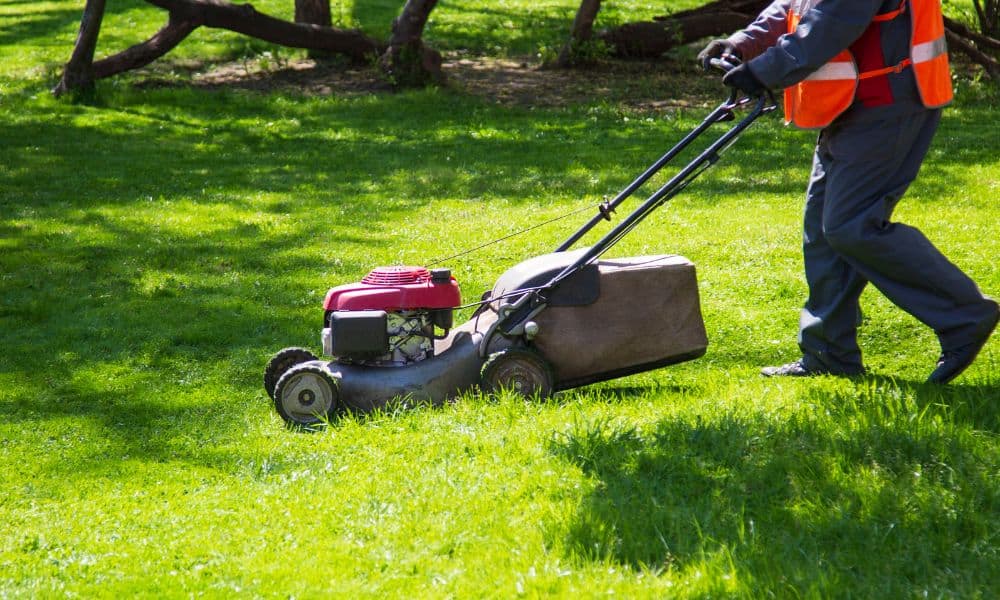
If you’ve recently mowed your lawn and you notice that the grass blades are turning yellow, it might be an indication that your lawnmower needs proper maintenance.
If your lawnmower has dull blades, it might end up damaging your grass blades by giving them a blunt cut. It might make the turfgrass more prone to diseases. The obvious solution is to sharpen or replace the mower blades such that the lawn grasses get a nice clean cut.
11. High Winds
If you live in areas prone to high winds or if the season in itself is windy, it might be the reason why your lawn isn’t as green as it should be. Winds dry out the lawn soil quickly, and to neutralize the loss, remember to water your lawn more than often.
12. Frost

When your lawn ground cools down to a temperature lower than the air next to the surface, frost occurs. Water vapor in the air forms a dew blanket on the turf, and needless to day, it damages the grass.
Thus, frost is also one of the common reasons which cause yellowish-brown spots on your lawn. There’s nothing much that you can do if the frost is the reason why your turfgrass is turning yellow.
However, if you make sure that the grass remains healthy by providing them with enough water and nutrients, they’ll be able to recover as quickly as possible.
13. Prolonged Heat
Extended periods of intense heat also lead to the yellowing of turfgrass. Grass blades, when exposed to prolonged heat, even if it’s just a few days, tend to dry out and lose color.
It might also be an indication that the root system of your lawn grass is shallow, and thus, they couldn’t retain moisture for long.
To bring the moisture and color back, water your lawn. Moreover, whenever you seed your lawn newly, make sure to water deeply, but less frequently to train the grass to develop deep roots.
14. Mowing the grass too short
If you cut your turfgrass too short, it might end up not having enough moisture. In case your lawn turns yellow every time you mow it, it might be an indication that you need to let the grass grow a bit longer.
Moreover, you might as well want to water the lawn more often if you feel that mowing too short is the reason why your turfgrass is turning yellow.
Summary
Figuring out why your turfgrass is turning yellow might be a hectic chore. There will surely be a lot of trial and error involved.
To make things easier, firstly, we recommend you to get a soil test done to figure out if your lawn is under or over-fertilized and analyze your current living environment as well as mowing habits.
However, consider seeking expert advice in case all these feel overwhelming. So, which among these 14 reasons do you think is turning your lawn yellow?
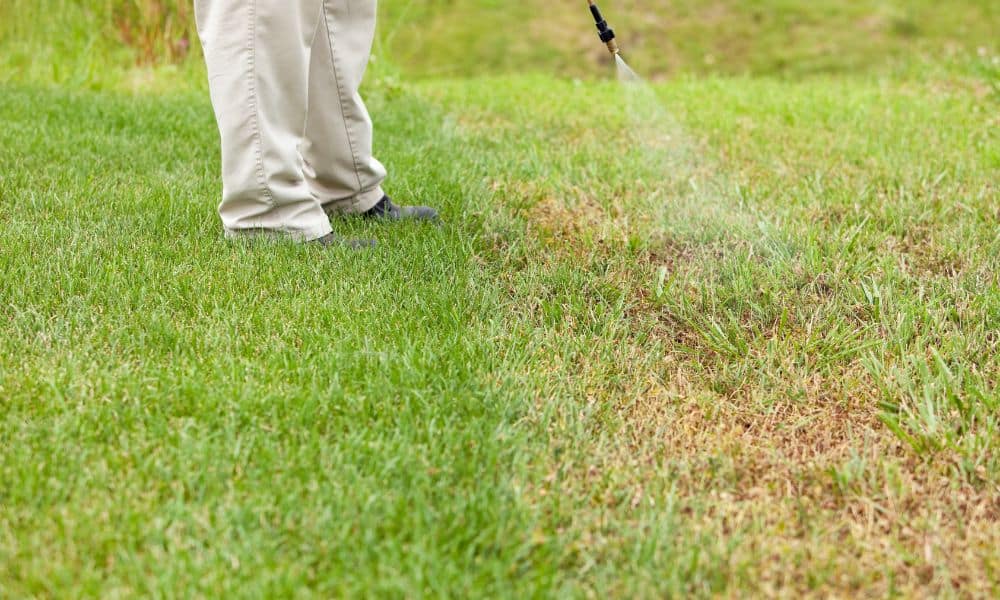
Leave a comment